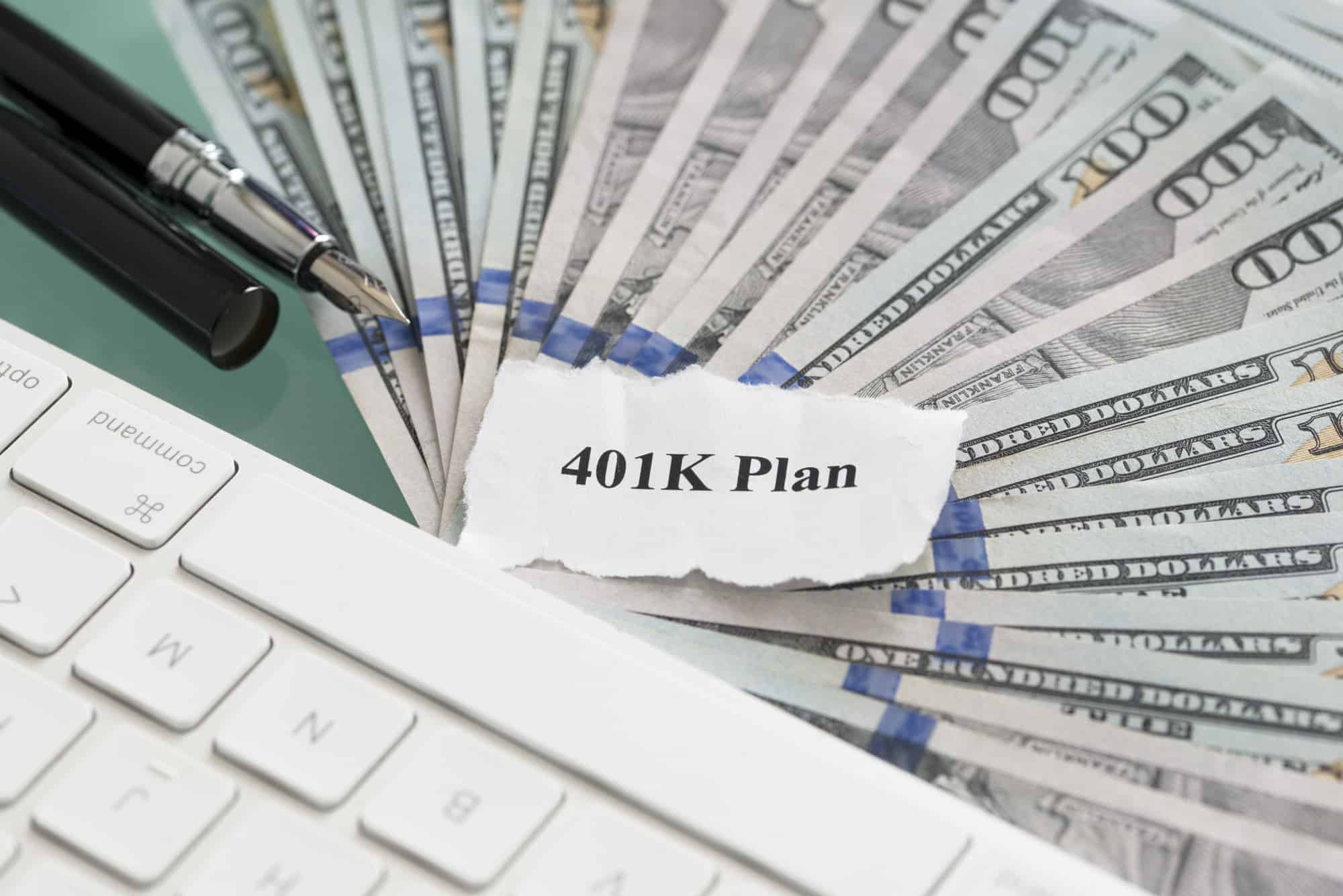To make Wealthtender free for readers, we earn money from advertisers, including financial professionals and firms that pay to be featured. This creates a conflict of interest when we favor their promotion over others. Read our editorial policy and terms of service to learn more. Wealthtender is not a client of these financial services providers.
➡️ Find a Local Advisor | 🎯 Find a Specialist Advisor

And other related benefits of the new legislation…
Less than a year ago I crossed a magical line in the legislative sand…
I turned 59.5.
Yeah, I know, that’s kind of an odd number, isn’t it?
Tell that to Congress though. They made that age a critical milepost in letting us access our own money from tax-deferred retirement accounts such as traditional IRAs and 401(k) plans.
If you’re younger than 59.5 and want to make a withdrawal from your (non-Roth) 401(k), beyond the income taxes you’ll owe on the portion of the withdrawal that comes from investment returns, adding insult to injury, you’ll also need to pay a 10-percent penalty.
SECURE 2.0 Shakes Things Up
On December 29, 2022, President Biden signed into law a $1.7 trillion omnibus law which included the so-called Setting Every Community Up for Retirement Enhancement (SECURE) 2.0 act.
There’s a lot to like about SECURE 2.0, and here’s one important aspect. It finally lets you access your own money from your 401(k) or IRA without penalty in certain emergencies.
Specifically:
- If you’re affected by a major disaster
- If you or a family member are victims of domestic abuse
- If you suffer a personal emergency
- If you become terminally ill
You can read a fairly complete discussion here, but here are the highlights…

Making Major Disasters (a Bit) Less Disastrous
If you’re affected by a federally declared major disaster (occurring after January 26, 2021), even if you’re younger than 59.5, you can withdraw up to $22,000 from your 401(k), 403(b), or 457(b) plan (but no more than the money you have in your account) without the 10-percent penalty.
What does it mean that you’re affected by the disaster?
It means your “principal place of abode” was in the affected area at any time during the period defined by the federal disaster declaration and that the disaster caused you an economic loss.
For example, a hurricane or a major flood might have damaged your house, and you need to pay a contractor to make repairs.
To take advantage, you must make the withdrawal within 179 days of the start of the incident (but if you haven’t yet, you have until June 27, 2023).
If your plan sponsor chooses, it can temporarily double the allowed limit of retirement-plan loans to $100,000 (but no more than your full vested balance).
The sponsor can also let you suspend loan payments for up to a year.
Making It (a Bit) Easier to Recover from Domestic Abuse
For many 401(k), 403(b), and 457(b) plans, starting next year, you’ll be able to withdraw up to $10,000 (but no more than half of your vested balance) with no penalty in cases of domestic abuse by your spouse or domestic partner.
The abuse could be against you, your child, and/or another family member in your household.
To take advantage, you’ll need to make the withdrawal within a year of when the abuse happened.
As Jonathan Bird, CFP®, CWS®, wealth advisor at Farnam Financial says, “Getting out of an abusive relationship is profoundly difficult. Being able to take up to $10,000 from your 401k balance makes that challenge a little bit easier. Women can also use free financial resources such as Savvy Ladies to help them take positive steps for their financial future.”
Helping (a Bit to) Recover from Personal Emergencies
This is another benefit available starting next year.
If you suffer a personal or family emergency that causes immediate unexpected costs, you can withdraw without penalty up to $1000 (but you must leave at least $1000 in the account).
You can make such withdrawals once every three years.
However, if you return the $1000 (or make $1000 worth of salary deferral contributions to the plan), you can take another penalty-free withdrawal the following year.
Related to this, the new law allows plan sponsors to set up an emergency savings account linked to their retirement plan. If your employer does this, you can put up to $2500 into this emergency savings account.
You can then withdraw the full amount you have in the plan any time you suffer emergency expenses.
A (Thin) Silver Lining for the Terminally Ill
This one hits emotionally close to home, as I sit and write this in my terminally ill sister’s house.
If you’re terminally ill, which for SECURE 2.0 means that your physician certifies you’re reasonably expected to live no more than 84 months (7 years), the new law lets you make any number of withdrawals of any amounts you have in your retirement plans.
A Final Little Gift from SECURE 2.0
Normally, if you withdraw money from your retirement plan, not only will you have to pay taxes and possibly penalties, you can’t ever put the money back in (though you may be able to make new contributions within the relevant IRS limits), which impacts your retirement.
Take advantage of any of SECURE 2.0’s new penalty-free-withdrawal clauses, however, and you have up to three years from the withdrawal to repay up to the full amount of that withdrawal.
You can even repay it into an IRA (which is helpful especially if you’ve since left your employer).
Don’t Forget that Penalty-Free Doesn’t Mean Tax-Free
If you withdraw money from your retirement plan under any of the above circumstances, you won’t have to pay the 10 percent penalty even if you’re younger than 59.5.
However, you’ll need to pay taxes on the earnings portion of the withdrawn amounts.
The Bottom Line
Retirement plans are there to fund our retirement, not everyday pre-retirement expenses.
However, the reality is that life hits too many of us with financially debilitating circumstances. When that happens, being able to access your retirement money without penalty can be enormously helpful.
That’s exactly what SECURE 2.0’s new emergency withdrawal provisions are designed to do.
Then, once you’ve recovered from the emergency (at least if that’s within three years), you can even put the money back into your retirement plan (or an IRA), to reduce the long-term impact on your retirement.
P. Timothy Uihlein, CFP®, MBA, Partner, Managing Director, and Senior Wealth Manager at Vincere Wealth Management sees this (as do I) as a positive development, saying, “Finally, clients have some options for accessing funds to get through short-term hurdles without the costs and time associated with obtaining a bank loan.”
Kevin M. Arquette, CFP®, Wealth Manager, Managing Partner, Wealthpoint Financial Planning caution us, however, “It’s crucial clients be aware of these expanded criteria for penalty-free withdrawals from their employer retirement plans for emergencies. Given the complexity of the tax code, they may not be familiar with these provisions. However, it’s important to use such withdrawals for emergency purposes only. To ensure you make the best decisions for your financial situation, work with a qualified financial advisor who can provide personalized advice and suggest alternative ways to fund temporary shortages in funds.”
Tax law is notoriously unloved, even by many tax pros. But this time, Congress managed to make the tax code a little bit better.
Disclaimer: This article is intended for informational purposes only, and should not be considered financial advice. You should consult a financial professional before making any major financial decisions.
About the Author
Opher Ganel
My career has had many unpredictable twists and turns. A MSc in theoretical physics, PhD in experimental high-energy physics, postdoc in particle detector R&D, research position in experimental cosmic-ray physics (including a couple of visits to Antarctica), a brief stint at a small engineering services company supporting NASA, followed by starting my own small consulting practice supporting NASA projects and programs. Along the way, I started other micro businesses and helped my wife start and grow her own Marriage and Family Therapy practice. Now, I use all these experiences to also offer financial strategy services to help independent professionals achieve their personal and business finance goals.
Connect with me on my own site: OpherGanel.com and/or follow my Medium publication: medium.com/financial-strategy/.
Find a Financial Advisor
Do you have questions about your financial future? Find a financial advisor who can help you enjoy life with less money stress by visiting Wealthtender’s free advisor directory.
Whether you’re looking for a specialist advisor who can meet with you online, or you prefer to find a nearby financial planner, you deserve to work with a professional who understands your unique circumstances.
Have a question to ask a financial advisor? Submit your question and it may be answered by a Wealthtender community financial advisor in an upcoming article.
–
Do you already work with a financial advisor? You could earn a $50 Amazon Gift Card in less than 5 minutes. Learn more and view terms.
This article originally appeared on Wealthtender. To make Wealthtender free for our readers, we earn money from advertisers, including financial professionals and firms that pay to be featured. This creates a natural conflict of interest when we favor their promotion over others. Wealthtender is not a client of these financial services providers.
Disclaimer: This article is intended for informational purposes only, and should not be considered financial advice. You should consult a financial professional before making any major financial decisions.
To make Wealthtender free for readers, we earn money from advertisers, including financial professionals and firms that pay to be featured. This creates a conflict of interest when we favor their promotion over others. Read our editorial policy and terms of service to learn more. Wealthtender is not a client of these financial services providers.
➡️ Find a Local Advisor | 🎯 Find a Specialist Advisor
